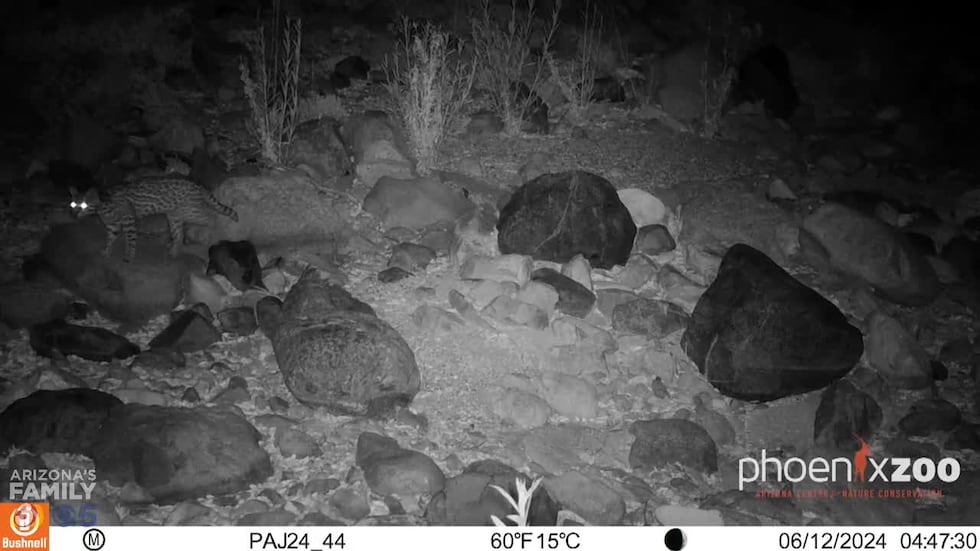Rare ocelot spotted in southern Arizona for first time in 50 years
PHOENIX (AZFamily) — Specialists have confirmed that a rare ocelot was spotted on a trail camera in southern Arizona.
The ocelot, first spotted in June, was captured on video by the Phoenix Zoo’s Atascosa Complex Wildlife Study field cameras that had been placed in the Coronado National Forest’s Nogales Ranger District in April.
A multi-agency review team confirmed that the cat was not seen in the region before, making it the first confirmed ocelot sighting in at least 50 years. This ocelot was found in desert scrub and at a lower elevation than most historic records of the animal in the state.

“AZ Game and Fish Department has conducted a pelage spot analysis comparing this ocelot with the current known ocelot in the state, as well as previous ocelots and concludes that this is indeed a new ocelot,” said Regional Nongame Specialist Tracy McCarthey.
One other ocelot has been recorded in the last year, but it was seen more than 50 miles away from where this new cat was sighted.
But wait, what is an ocelot?
An ocelot is a medium-sized spotted wild cat that is nocturnal and native to parts of the world, including the southern U.S. and Mexico.
Even though ocelots are twice the size of an average house cat, they are much smaller than other wild cats. Ocelots are prey for harpy eagles, pumas, jaguars and anacondas, according to National Geographic.
Ocelots have been listed as endangered in the U.S. since 1972. Hunting and habitat loss have both significantly impacted the species’ decreasing populations.
What happens next?
Zoo staff and volunteers will return to the field this month to retrieve additional camera data from the spring and summer seasons. The hope is to have the cameras collect data for a full 18 months so crews can analyze seasonal differences.
Crews are hopeful that they will find more records of this new ocelot and other significant sightings as data analysis continues.
“Finding evidence of a new ocelot in southern Arizona reinforces our commitment to collaborative efforts to conserve wildlife and their habitats in the region,” said Bert Castro, Arizona Center for Nature Conservation (ACNC)/Phoenix Zoo president and CEO. “We’re eager to review additional camera data from this study to see what else we can learn about species of conservation concern in the borderlands and what they need for their continued survival.”
See a spelling or grammatical error in our story? Please click here to report it.
Do you have a photo or video of a breaking news story? Send it to us here with a brief description.
Copyright 2024 KTVK/KPHO. All rights reserved.










